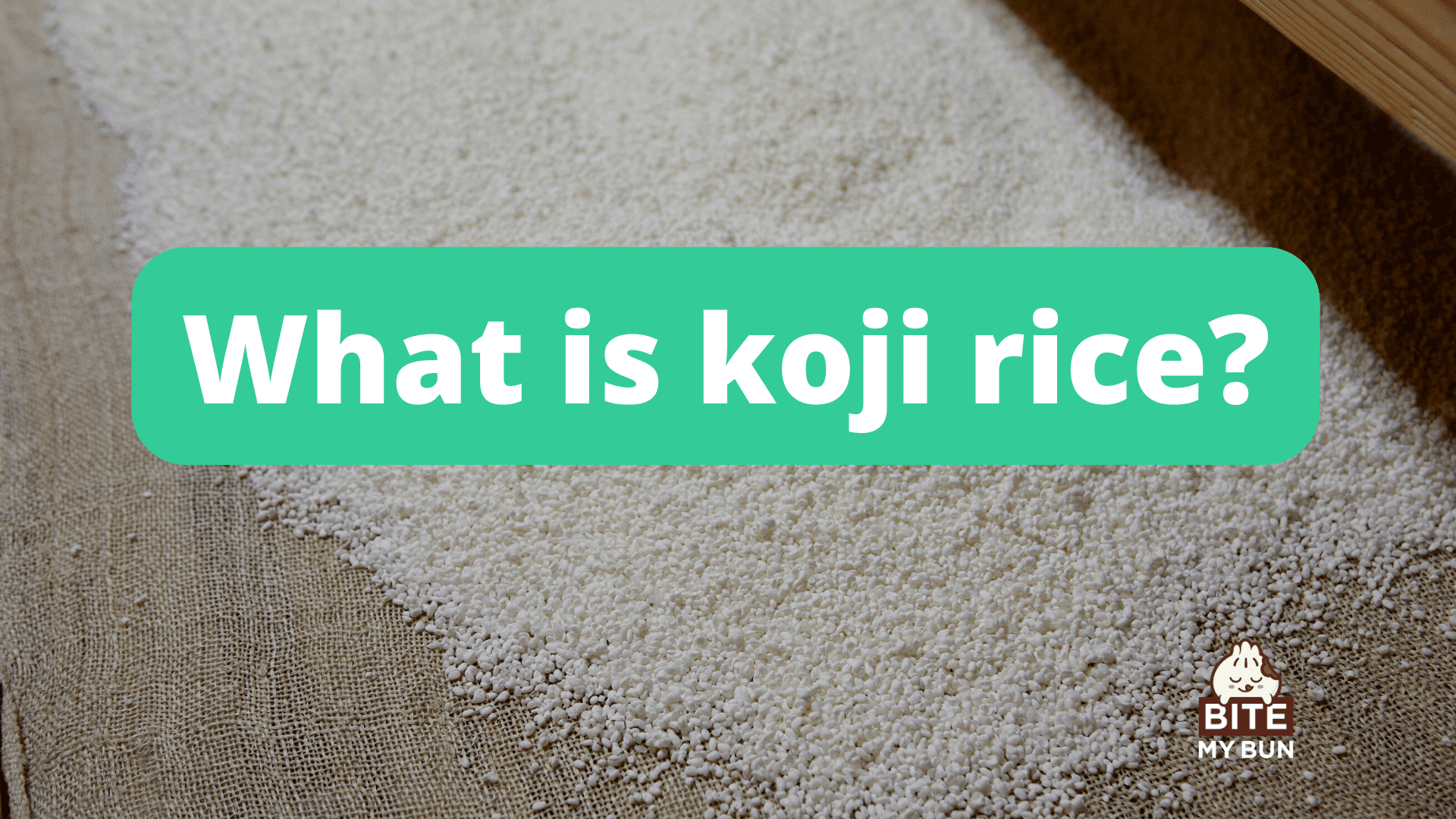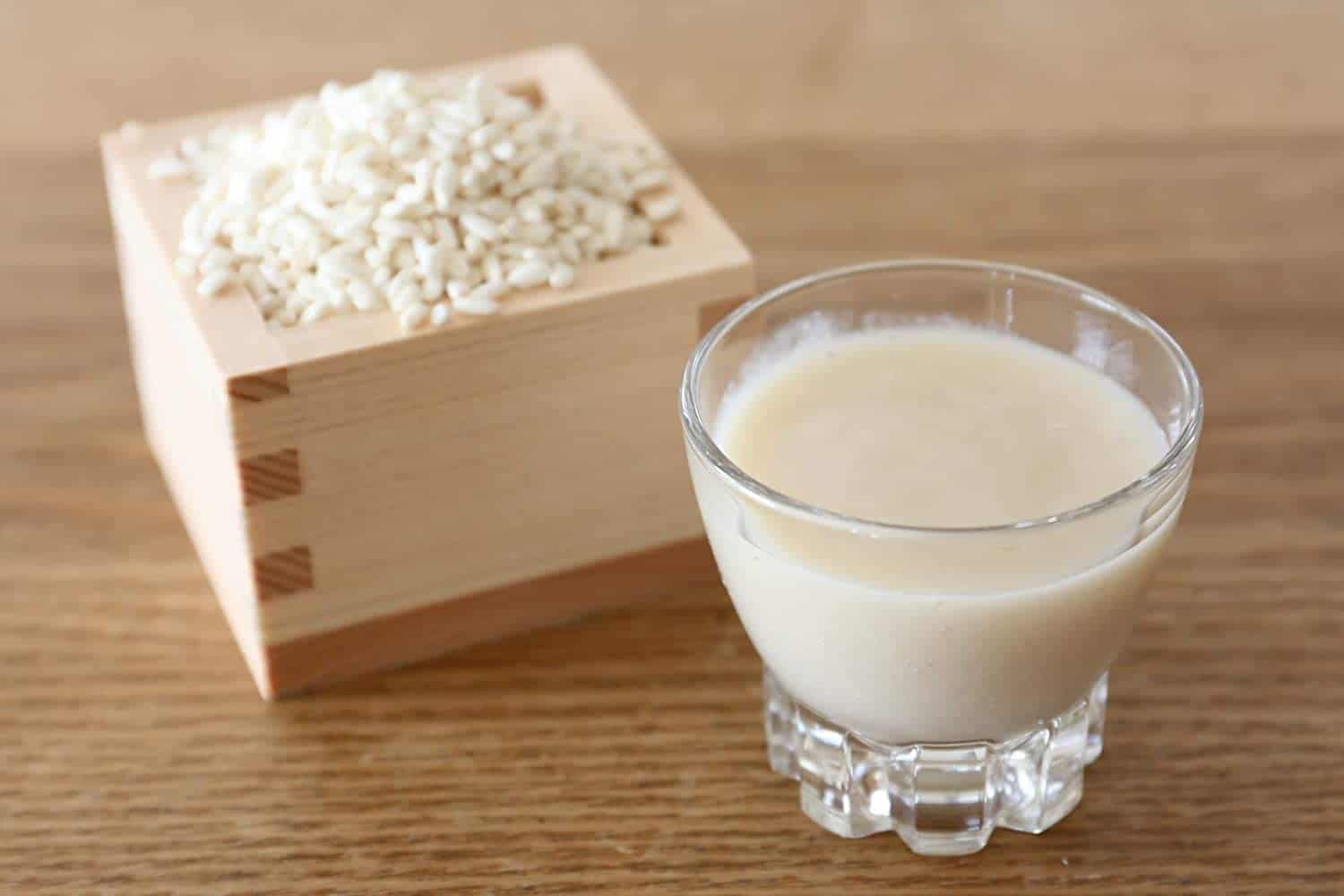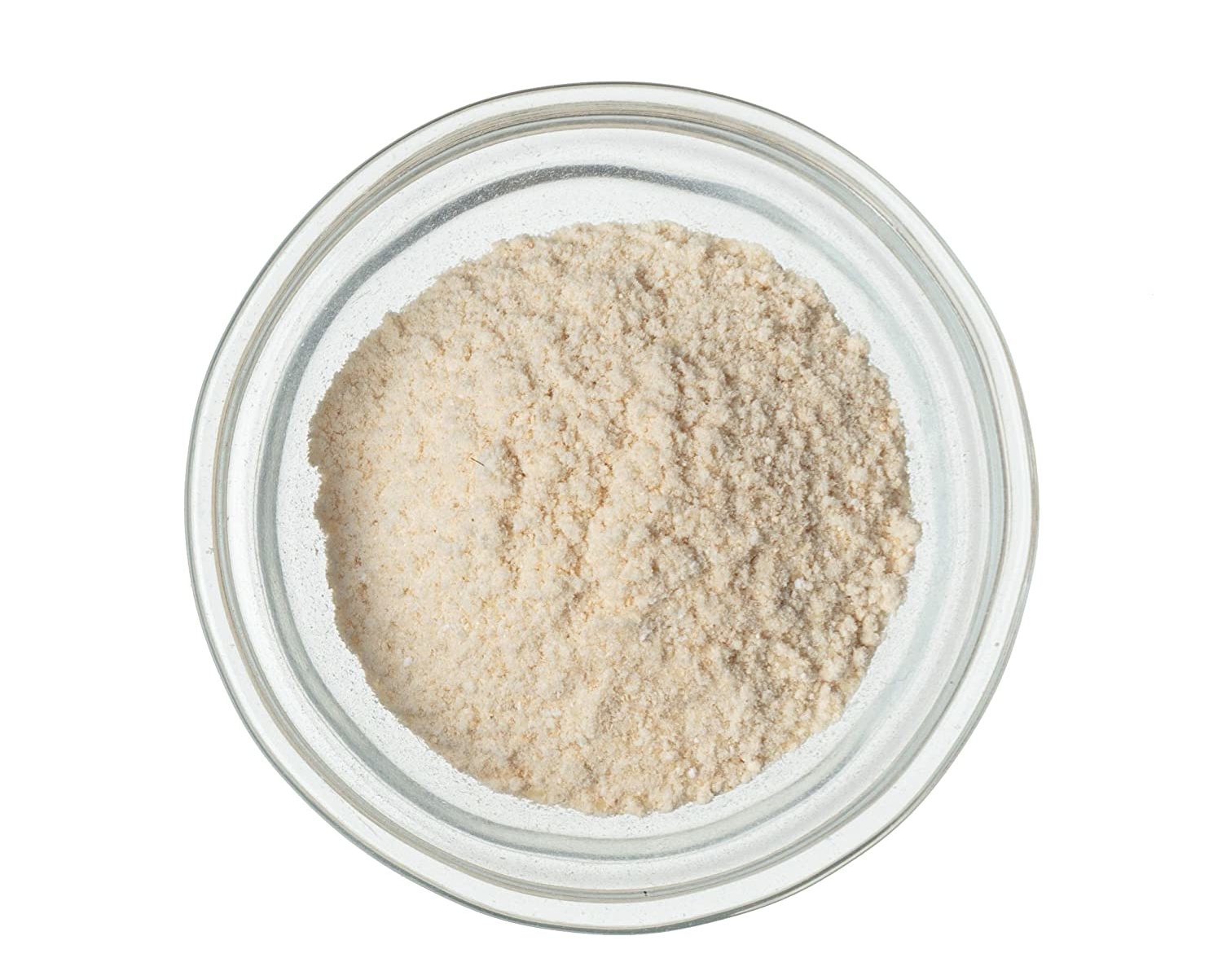What is koji rice? Complete guide to special fermented Japanese rice
Fermented foods like Korean kimchi, kombucha, and kefir have been very popular lately and for a good reason – fermented foods are healthy! There’s also an exceptional Japanese fermented food called koji rice that you should get to know.
Koji rice is cooked rice, inoculated with a mold called Aspergillus Oryzae (rice) or “koji.” This kind of mold ferments cooked rice and releases enzymes that decompose all of the carbs and protein. Koji rice serves as the base to make your own miso, amazake, shio koji, and more.
In this post, I’m sharing all the info you need to know about rice koji, how to make it and how to use it. Plus, I’ll share my favorite type of koji rice kit you can buy from Amazon.

It’s a staple of many Japanese home kitchens and what makes it unique is that it’s a fermented food that’s used as a starter for other fermented foods and drinks.
So, koji rice isn’t a food you just eat as is, but you use it to make other foods and beverages.
Koji rice, or “red yeast rice” makes food taste umami – that’s the fifth human taste and is best described as savory, slightly meaty, and addictive.
Koji rice, like other ferments, is healthy and gives food a great taste.

Check out our new cookbook
Bitemybun's family recipes with complete meal planner and recipe guide.
Try it out for free with Kindle Unlimited:
Read for freeIn this post we'll cover:
What is koji rice?
Koji rice refers to moldy rice grains, inoculated with Aspergillus oryzae. The rice grains are incubated for a couple of days, and they continue to ferment.
This method of moldy fermentation can be used for rice, barley, soybeans, and many grain varieties.
Koji mold continuously releases enzymes. These ferment the rice and break down the carbohydrates and proteins.
Chinese, Japanese, and Korean artists have mastered the practice of cultivating Aspergillus oryzae (also known as koji-kin in Japan) on grains, particularly rice and barley, for many centuries.
When the conditions are right for the mold spores to thrive on one of these substrates, its tendrils secrete:
- A slew of enzymes to break down proteins into their component amino acids
- Amylase enzymes, and saccharase enzymes to break down starches into simpler sugars.
- Lipase enzymes to break down fats into lipids, esters, and aromatic compounds.
I know, it sounds complex but it’s just a breakdown of the enzymes and components in the rice.
Inoculated rice or barley (known as “koji”), now covered in a fluffy snowdrift, is subsequently used to activate the enzymes.
Koji can be fermented in a few ways so it can take on a sweet sugary taste which is then fermented into sweet rice porridge called amazake.
Alternatively, it can be used to make mirin, or it can be denatured to be less sweet and make miso and sake which have a savory flavor.
Koji rice has been known as Shio-Koji in Japanese meaning salty koji rice. Most koji is made with white rice.
As I just stated, you can use koji rice as the starter for various condiments like miso paste, soy sauce, foods, and fermented alcoholic drinks like Japan’s beloved sake.
What is shio-koji?
Shio koji is a koji marinade derived from rice. It’s also known as koji salt.
In 2011 Shio-koji was a fad in Japan but the fad is still going strong as more Westerners are getting a taste of it.
Since that time several recipes of Shio-Koji were developed. Shio-koji combines salt and koji for a salty flavor.
Thus, Shio-koji is a fermented spice that has been called Shio meaning ‘salt’, and is a seasoning that contains salt and koji. It’s the best type of seasoning if you want to marinate meat to give it a distinct umami taste.
This koji salt cure or marinade is made by inoculating the rice grain with the mold which is then mixed with water and salt.
The result is a thick mixture with a consistency like porridge with a funky and pungent taste with a slight sweetness to it.
What is koji and what’s the history?
Koji or koji-kin is a specific type of fungus or mold also known scientifically as Aspergillia Oryzae used to inoculate rice and other grains. Something people don’t know is that koji is NOT yeast.
Koji and koji rice are not the same thing. The koji is the fungus whereas the koji rice is moldy rice.
Aspergillia oryza is the scientific name for koji for the species of fungus responsible for making koji.
It’s a filamentous fungus that can grow on several substrates such as rice, grain, vegetables, and anything else that contains carbohydrates.
Since ancient times they have used this to prepare alcoholic beverages such as sake, or condiments like soy sauce and other beverages like miso sashimi.
So, where does koji come from?
This fungus was discovered a very long time ago and it was first used for fermentation 3000 years ago in ancient China. It took a while before this fermentation method was imported to Japan.
During the Yayoi period between B.C 10th – A.D 3rd century koji first came to Japan.
In the 13th to 15th century (Heian and Muromachi period), the fungus used for fermenting foods was then sold commercially to the general population.
It was used to make sake as early as the 8th century in the Nara period.
In the Harima no Kuni Fudoki which is a cultural and geographic record from Harima province, the koji fermentation method for sake was mentioned several times.
There’s even mention of koji rice used to make different types of foods and drinks.
What is koji used for?

Koji isn’t used for making koji rice only. In fact, it’s used to make all kinds of Japanese foods and drinks.
Here are the most popular foods and beverages made with koji:
- Koji rice – this is the “starter” for all the foods and drinks on this list
- Mirin
- Soy sauce
- Sake
- Miso paste (various flavors and intensity)
- Amazake (sweet rice drink)
- Shio koji
- Tamari
- Vegan cheese
Koji might actually be the reason that miso soup gives you diarrhea… learn more here
Amazake (Sweet Sake)
Amazake is a non-alcoholic beverage made from fermented rice that’s safe for children to enjoy.
The Japanese term “nomu tenteki” literally means “drinking the IV drops”, which are high in nutrients. This drink is popular for New Year’s celebrations and Hina Matsuri, Japan’s doll festival.
Miso
It takes time to make miso, but it’s fun. You can enjoy miso tastes unlike those found in the commercial market.
With rice koji, you can make white, yellow, and red miso paste which has a salty and pungent taste but it’s perfect for miso soup.
Japanese koji FAQs
Can koji be grown on different grains?
Yes, rice, barley, and even beans like soybeans can be used. Corn and wheat work too!
Okay, rice is a good starting point but koji is also suitable for growing grains in a variety of different ways.
Make sure all the grain is cooked in the oven without any problems. Whole grain, which is still germinated, requires less effort.
The koji spores can penetrate the shell or penetrate a grain. Therefore, the grain must be ground coarse or steamed before opening.
Do koji rice foods have a unique & addictive taste?
Foods made with cultured fungus and grains for several months achieve a unique and addictive taste. Koji is truly magic when it comes to flavors. Our palate is a bit overwhelmed by the condiments that hit the tongue.
The reason is that the mold’s enzymes unlock a whole range of amino acids which have a savory taste. One of those amino acids is the notorious glutamate, part of MSG and this makes food so addictive.
The glutamate in inoculated rice isn’t so unhealthy as fast foods that are full of MSG.
Food takes on that savory flavor only when it’s already been fermented. But, on its own, the shio koji has a different scent and taste.
The inoculated grains (whether rice or barley) take on a sweet and fruity aroma which tastes a bit like a sweet gummy on the tongue.
It’s the flavor of sweet white miso paste and mirin or cooking mirin.
There’s another type of koji to look out for – shoyu koji which is koji grains that are fermented in some soy sauce, not water so the flavor is more intense.
Where to buy koji rice?
If you’re looking for a convenient way to get your hands on koji, you can order Koji spores and starter kits like the Shirayuri Koji [Aspergillus oryzae] Spores on Amazon. These are gluten-free and vegan.

It’s the easiest way to make sake at home. This Shirayuri koji kit contains long-haired spores which you can use to inoculate rice, other grains, and even potato for drinks like sake.
But you can also use it to ferment soybeans and make miso paste or soy sauce at home.
The fungus has a sweet taste so it’s perfect for a sweeter sake, mirin, white miso paste, and of course, shio koji.
If you’re looking for another all-purpose koji kin (spore starter kit) you can use Hishiroku Koji Starter Spores Powdered Kairyou Chouhaku-kin.
Want to try shoyu koji? It’s also called umami puree or Muso from Japan Organic Umami Puree with Ginger. It’s made with fermented koji in soy sauce.
How long can you keep koji rice?
You can store koji rice for up to one month in an airtight container in your fridge. If you store it in the freezer, it’s good for up to six months.
So, you don’t have to grow koji all the time but keep in mind that if you freeze koji rice it can lose some of its flavors.
Another storage option is to dry koji in the food dehydrator.
Dehydrate at a temperature of 45 degrees C or 113 F maximum. This preserves the necessary enzymes for any future fermentation.
You can keep koji rice frozen but not completely frozen. The product remains soft to use without drying completely.
But beware, fermentation can stop in the freezer. It will slowly lose taste so you should use it within a maximum of 6 months.
When shio koji has been frozen several times, its deterioration rate will grow. Make smaller batches so it doesn’t go to waste.
Is koji rice healthy?
If you’re wondering about the health benefits of koji rice, you should know that fermented foods are generally healthy. Like miso, koji inoculated foods are some of the healthiest Asian foods.
Koji rice has a multitude of great health benefits, just like other fermented foods.
It is particularly high in probiotics, a type of helpful bacteria that helps to promote gut health and nutritional absorption.
Probiotics have also been linked to a variety of other advantages. Probiotics may have an impact on immunological function, cholesterol levels, heart health, and mood.
These are substances that aid in the prevention of cancer.
Shio-Koji fermented foods help tenderize and decompose foods as well as nutrients such as amino acids and minerals.
The protein also contains more nutritional information. This can increase metabolic activity in the brain as well as help to recover from fatigue.
Koji has high amounts of vitamin B1, vitamin B 2, vitamin B6, etc. Vitamin E is a dietary supplement that converts carbohydrates into energy and is also helpful for recovering from fatigue.
Vitamin B2 helps in maintaining healthy and strong skin, hair, and nails.
Takeaway
Koji and koji rice more specifically are an important part of Japanese culture, especially the culinary tradition.
Japanese cooking is full of amazing umami-flavored dishes. If you’re planning on making miso or soy sauce at home, be sure to use the koji rice recipe.
Once you get the hang of making koji culture, you’ll be making miso, shoyu, Japanese sweet sake, and amazake at home.
There’s no healthier way to enjoy Japanese cooking than to use the raw material and make things from scratch.
Also learn how to make your own furikake at home [shrimp & bonito flavor recipe!]
Check out our new cookbook
Bitemybun's family recipes with complete meal planner and recipe guide.
Try it out for free with Kindle Unlimited:
Read for freeJoost Nusselder, the founder of Bite My Bun is a content marketer, dad and loves trying out new food with Japanese food at the heart of his passion, and together with his team he's been creating in-depth blog articles since 2016 to help loyal readers with recipes and cooking tips.
